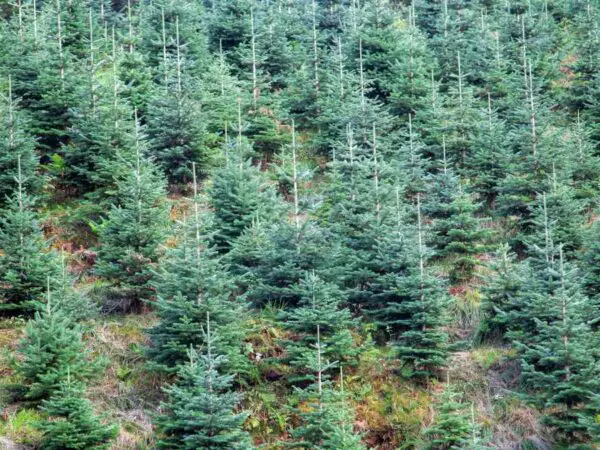Curious about the different types of poplar trees out there? From the historical significance to their unique characteristics, exploring the diverse range of poplar tree species, including black poplars, can be a fascinating journey. Whether you're an arbor enthusiast or just someone intrigued by nature's wonders, understanding how many types of poplar trees exist can open up a whole new realm of botanical appreciation.
Key Takeaways
- There are various types of poplar trees, each with unique characteristics and uses.
- To identify different types of poplars, look at leaf shapes, bark texture, and growth habits.
- Poplar trees are fast-growing and adaptable to various soil conditions, making them a popular choice for landscaping and timber production.
- Consider planting poplar trees for their quick growth, shade provision, and potential economic benefits.
- Protect poplar trees from common pests and diseases by monitoring and implementing appropriate control measures.
- Poplar trees have cultural significance in various societies, reflecting their historical and symbolic value.
Poplar Trees Overview
Description
Poplar trees, members of the Salicaceae family, are characterized by their tall trunks and triangular leaves. Their bark varies in color from gray to greenish-white.
Poplar trees, native to the landscape, belong to the genus Populus and are a member of the Salicaceae family along with willows. Worldwide, there exist approximately 35 different species of poplar trees.
Classification
With a long evolutionary history dating back millions of years, native poplar trees are believed to have originated in North America and Eurasia. Genetic analysis has enabled scientists to understand the phylogenetic relationships among various poplar tree species.
Different Types of Poplars
Major Species
Poplar trees come in various species, with some major ones being Populus alba (White Poplar), Populus deltoides (Eastern Cottonwood), and Populus tremuloides (Quaking Aspen). Each of these major species has unique characteristics that help them thrive in different environments and soil zones. For example, the White Poplar is known for its distinctive white bark and silver-green leaves, while the Eastern Cottonwood features triangular-shaped leaves and a rapid growth rate. These major species have been extensively cultivated for their wood, landscaping purposes, and even for providing shade.
The Quaking Aspen stands out as it can withstand cold temperatures due to its ability to propagate through root sprouts. On the other hand, the Eastern Cottonwood, a shade tree, thrives in moist soils near water bodies like rivers or streams. Understanding these distinctions can aid landscapers and foresters in selecting the most suitable species based on their specific needs and environmental conditions.
Varieties and Cultivars
Apart from major species, there are numerous varieties and cultivars of poplar trees available in horticulture. Varieties may vary in leaf shape, coloration patterns such as variegated foliage or autumn colors ranging from yellow to red hues. Some popular varieties include 'Italica,' known for its columnar shape ideal for urban settings due to space constraints; 'Aurea,' prized for its golden-yellow leaves; 'Serotina,' valued for its late-season fall color display.
In contrast to natural varieties, cultivars are intentionally bred by horticulturists aiming at specific traits like disease resistance or fast growth rates. For instance, cultivars like 'Robusta' are favored by timber industries due to their rapid growth rate compared to wild-type populations of poplars. The diversity within poplar tree varieties allows gardeners and landscape designers ample choices when planning green spaces or forest plantations.
Identification Tips
North American Species
Poplar trees are diverse, especially in North America. Native species like Populus balsamifera (Balsam Poplar) and Populus grandidentata (Bigtooth Aspen) thrive there. These trees aren't just pretty; they play crucial roles in their habitats.
The Balsam Poplar, for instance, is known for its resinous buds that emit a pleasant fragrance. On the other hand, Bigtooth Aspens stand out with their large leaves featuring deep teeth along the edges.
Common Types
Apart from native species, several common types of poplar trees exist worldwide. Lombardy Poplars are famous for their towering height and slender shape—ideal as windbreaks to protect against strong winds. Black Poplars boast dark bark and are indigenous to Europe.
Hybrid Poplars combine characteristics from different poplar species through cross-breeding methods. They often exhibit enhanced traits such as faster growth rates or disease resistance.
Growth and Ecology
Growth Rate
Poplar trees are renowned for their rapid growth. Under ideal conditions, they can shoot up several feet annually. This quick development is why they're favored for timber production and reforestation efforts.
The speedy growth of poplar trees allows them to be a prime choice for various projects that require a fast-growing tree species. For instance, in just a few years, poplars can reach substantial heights suitable for lumber production or to provide shade in urban areas.
Mature Height
The final height of poplar trees differs based on the specific species and the surroundings they grow in. Some varieties, like Eastern Cottonwood, can tower over 100 feet tall when fully grown. Conversely, other types such as Quaking Aspen tend to have shorter statures.
Different types of poplar trees have varying mature heights which cater to different needs - from providing towering canopy coverage to smaller ornamental options suitable for landscaping small spaces.
Ecology and Cultivation
In addition to their rapid growth rate, poplar trees play a crucial role ecologically by offering shelter and sustenance to numerous wildlife species. They are often strategically planted along riverbanks (riparian areas) due to their ability to thrive in wet soils while preventing erosion effectively.
Poplars contribute significantly towards maintaining ecological balance by creating habitats for birds and insects while stabilizing soil near water bodies like rivers or streams where their root systems help prevent erosion.
Uses of Poplar Trees
Food and Manufacturing
Poplar trees serve various purposes, especially in manufacturing. The wood from these trees is commonly used to make furniture, plywood, and paper products. The inner bark of certain poplar species has medicinal properties and has been traditionally utilized for its healing benefits. Moreover, poplar buds can be harvested to create teas or salves that offer potential health advantages.
In terms of energy production, poplar trees play a crucial role as they are considered a renewable energy source. These trees can be cultivated as biomass crops specifically for producing biofuels due to their fast growth rate. Their efficiency in converting sunlight into biomass makes them an ideal choice for sustainable energy generation.
Art and Land Management
Furthermore, poplar trees have made their mark in the realms of art throughout history. Their unique leaves and graceful form have inspired artists over the years, making them popular subjects for paintings and photographs alike. In addition to their artistic significance, poplars also find practical use in land management practices such as agroforestry systems where they contribute positively to both agricultural productivity and environmental conservation efforts.
Planting Poplar Trees
Best Places to Plant
Poplar trees thrive in sunny areas with well-drained, moist soil. They are commonly found in parks, along roadsides, and in spacious landscapes. Some species can withstand colder climates, while others prefer warmer regions. Choosing the right location is crucial for the tree's health and growth.
To prevent excessive suckering, it's advisable to select cultivars less prone to this issue. Regular pruning helps control suckers and maintain the tree's shape. Installing proper root barriers during planting can significantly reduce sucker growth, ensuring a healthier tree overall.
Sucker-Free Advice
When deciding where to plant poplar trees, consider locations that receive full sun exposure and have well-drained soils. These conditions are ideal for their growth and development. Whether you opt for a black poplar or grey poplar variety, ensure they have enough space to flourish.
Selecting male or female trees depends on your preference; however, male trees produce less fuzz than females do. If you're looking for a low-maintenance option that doesn't shed seeds or create a mess in your yard, choosing male poplar trees might be the way to go.
Pests and Diseases
Common Concerns
Poplar trees are vulnerable to various diseases and pests like aphids and canker diseases. Their rapid growth may result in weak wood, making them prone to breakage during storms. Moreover, the extensive root system of poplars can lead to issues with underground utilities if not managed correctly.
To mitigate these risks, regular monitoring for pests and diseases is essential for effective disease management in poplar trees. Pruning during the dormant season helps reduce stress on the tree, promoting overall health. Implementing proper irrigation practices plays a crucial role in ensuring healthy growth while minimizing water stress on the tree.
Poplars in Culture
Cultural Significance
Poplar trees, belonging to the populus genus, hold significant cultural value worldwide. They feature prominently in various societies, symbolizing different concepts and beliefs. For instance, in some cultures, poplar trees are revered and linked to sacred rituals or ceremonies. Folklore often portrays these trees as symbols of strength or resilience.
In different parts of the world, poplars have been intertwined with religious beliefs and practices for centuries. Their presence is not merely botanical but carries spiritual weight too. Some communities attribute divine qualities to poplar trees, incorporating them into their myths and traditions.
Agriculture and Phytoremediation
The populus genus plays a crucial role in agriculture through phytoremediation projects aimed at cleansing contaminated soil or water bodies. These projects leverage the unique characteristics of poplar trees – especially their extensive root systems – to absorb pollutants like heavy metals or organic compounds effectively. This natural filtration process helps restore environmental balance by purifying degraded areas.
Furthermore, poplars are integral components of agroforestry systems that combine tree cultivation with traditional crop farming methods. By integrating these versatile trees into agricultural landscapes, farmers can enhance soil health, provide shade for crops, improve biodiversity, and even generate additional income from timber production.
You've now explored the vast world of poplar trees, discovering their various types, characteristics, and uses. By understanding how to identify them, their growth patterns, and even their presence in culture, you've gained a deeper appreciation for these remarkable trees. Whether you're a nature enthusiast, a gardener, or simply curious about the environment around you, poplar trees offer a fascinating study that connects us to both nature and human history.
As you continue your journey with trees and plants, remember the importance of conservation and sustainable practices. Consider planting a poplar tree in your garden or supporting initiatives that protect these valuable species. By taking small steps in your own backyard or community, you contribute to the preservation of our natural world for future generations to enjoy.
Frequently Asked Questions
How many types of poplar trees exist?
There are over 35 different species of poplar trees, each with unique characteristics and uses. Some common types include the Eastern Cottonwood, Lombardy Poplar, and Hybrid Poplars.
Are poplar trees easy to identify?
Yes, poplar trees can be identified by their distinct leaves which are usually triangular or diamond-shaped with serrated edges. Their bark is smooth and often marked with diamond-shaped patterns.
What are some common uses of poplar trees?
Poplar trees have various uses including timber production for furniture and construction, paper manufacturing due to their fast growth rate, as well as in landscaping for windbreaks and erosion control.
How should I plant a poplar tree successfully?
Choose a sunny location with well-drained soil for planting your poplar tree. Dig a hole twice as wide but just as deep as the root ball. Water thoroughly after planting and mulch around the base to retain moisture.
What pests or diseases commonly affect poplar trees?
Common pests that attack poplars include aphids, caterpillars, and borers while diseases like leaf rusts and cankers can also impact these trees. Regular inspection and appropriate treatment can help manage these issues effectively.
Image Source: Paid image from CANVA





